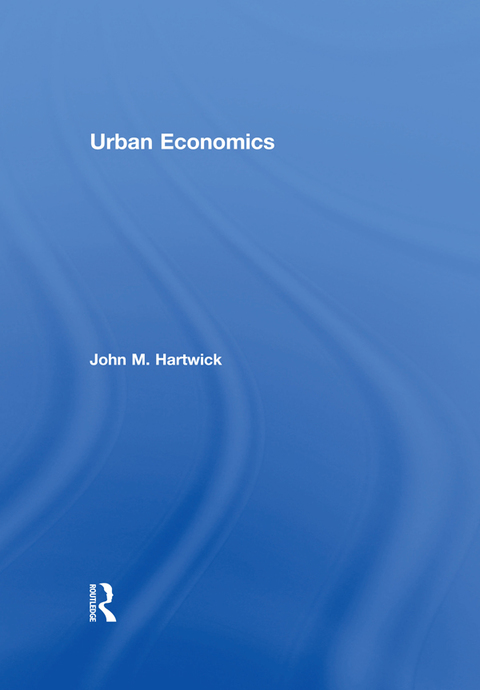Description
Efnisyfirlit
- Cover
- Title
- Copyright
- Contents
- List of figures
- List of tables
- Preface
- Acknowledgements
- 1 The city as a trading entity
- Introduction
- Commodity trade of large cities in the United States
- The accounts for a “small” open city
- A local goods sector added on
- A local housing sector added on
- A local public sector
- Simulating our small open city
- The basic model
- The addition of a local public sector
- A local non-traded good (haircuts)
- The basic model with a non-traded and a government good
- Sunnier cities
- Adaptive equilibria
- Summary
- Main points of Chapter 1
- Questions and problems
- Appendix 1.1
- 2 Land use for the simplified city
- Land allocation
- The classic statement of land allocation (von Thunen)
- A simple monocentric model of a city with constant residential density
- Measuring technical change with land rent change
- The open-city assumption
- Rent change from a transportation improvement
- Cobb–Douglas utility functions
- General capitalization in rent change
- Summary
- Main points of Chapter 2
- Questions and problems
- Appendix 2.1
- Appendix 2.2
- 3 Distinct income classes and suburban employment
- Introduction
- Different income classes in the monocentric city
- A suburban ring of jobs
- Durable structures in a monocentric city
- General utility and production functions and capitalization
- Geographic amenity differences between cities
- Measuring the attractiveness of a city (quality of life indicators)
- Summary
- Main points of Chapter 3
- Questions and problems
- Appendix 3.1
- Appendix 3.2
- 4 Wages, agglomeration and migration
- Introduction
- Scale economies
- City size, labor pooling and local unemployment
- Fitting workers with distinct skills to vacancies with distinct requirements
- Face to face activity
- Positive externalities between neighboring firms
- Cities adjusting: short term and long term
- Analytical detail for amenity increase
- Sticky adjustment to shocks to a city
- Long term change for cities in the United States
- Harris–Todaro migration-unemployment model
- Discrimination
- Summary
- Main points of Chapter 4
- Questions and problems
- 5 Basics of location economics
- Introduction
- The Loschian service town
- Hotelling’s excessive clustering argument
- Zero profit spatial price arbitrage
- Spatial price equilibrium
- The Weber firm location problem
- Intermediate goods and urban structure 126 Summary
- Main points of Chapter 5
- Questions and problems
- Appendix 5.1
- Appendix 5.2
- 6 Growth of cities
- A growing economy
- The medieval fortified village
- Horizontal growth of villages
- Import substitution by larger cities
- A two-city type hierarchy under Ricardian assumptions
- Intermediate goods, scale and transportation costs
- Intermediate goods and scale advantage
- Separation of high-level decision-making from direct production activity
- Technical progress and cities
- Decomposition of aggregate growth into city-specific growth
- Long-term demographic reorganization
- Data for city sizes in a system
- Great ratios for cities
- Decline
- Summary
- Main points of Chapter 6
- Questions and problems
- 7 Transportation
- Demand for alternative modes for commuting
- Mass transit
- Congestion charges
- Tax revenue and the size of the roadway
- Vehicle emission controls
- Congestion at a bottleneck
- The future of central city entry charges for vehicles
- Summary
- Main points of Chapter 7
- Questions and problems
- Appendix 7.1
- 8 Housing
- Introduction
- User cost and asset equilibrium
- User cost versus rent for estimating house service value
- Investing in a home or in a mutual fund
- Housing supply by trickle-down
- Unpacking the price of a house
- Rent control
- Public housing
- Summary
- Main points of Chapter 8
- Questions and problems
- Appendix 8.1
- Appendix 8.2
- 9 The public sector
- Introduction
- Pure public goods
- Preference revelation
- The median voter and a size for G
- Public good in the utility function and city structure
- Public good cost incidence
- Taxation with houses with structures (capital)
- Relocating to find a better public sector “outcome”
- Worker “relocation” and local public goods
- Public sector bundles
- The role of municipal government
- Local government revenue sharing
- Criminal behavior
- Urban crime
- Summary
- Main points of Chapter 9
- Questions and problems
- Appendix 9.1
- Appendix 9.2
- 10 Populations, slums and planning
- Introduction
- Slums
- Poor people and the future
- Sustainable cities
- Regulation of urban development
- From economics to policy design
- Regulation of land use
- A parliament of mayors
- Economic policy
- Summary
- Main points of Chapter 10
- Questions and problems
- References
- Index






Reviews
There are no reviews yet.